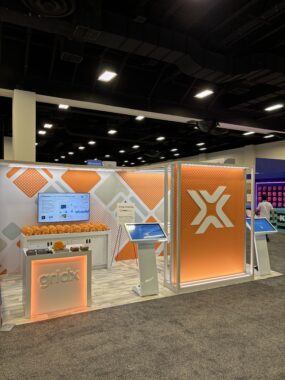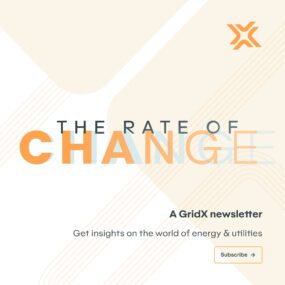Avoiding the Potential Ramifications of Modern Rate Structure
A proactive approach is needed to dodge possible traps.

The implementation and adoption of modern rate structures, such as time-of-use (TOU) and varying rates, is a critical driver in meeting decarbonatization goals. Utilizing such rates provides the financial incentive that many customers need to shift energy usage. But if not done right, these programs can unintentionally have a negative impact on the overall customer experience and jeopardize future success.
Utilities need a proactive approach before and during rollouts. Having a program built for success from day one will more likely save time and money and have a positive impact on customer satisfaction down the road. Here are 4 things to consider when implementing new rate structures and innovative programs.
Pilots are not the only way to break your fall
Pilot programs can be a successful way for utilities to operationalize and fine-tune their program offerings but it’s not the only way to be proactive. In a recent discussion with Canary Media and The Brattle Group, Are Customer’s and Utilities Finally Ready for Modern Rate Structures, Scott Engstrom, GridX Chief Customer Officer, questioned if pilot programs are always necessary.
As a partner in several successful TOU rollouts, Engstrom knows the importance of large-scale pilots. But, for some states and utilities looking at opt-in TOU rates, he questions the value of spending time on such pilots. “I would ask this, what do you gain from doing a five thousand to ten thousand customer pilot for a year to a year and a half and then wait for your commission to agree to another program?”
A pilot program can certainly provide value, but it can also take an immense amount of time and can only offer select insights. Being proactive in analyzing smart-meter data across the full customer population, as well as individual customer segments, can help you start a modern rate initiative in a smart way. Utilities can expedite the process by using this analysis to forego a pilot while still avoiding common pitfalls of a new rate introduction.
You could be jeopardizing CX
Communicating with your customers should be a top priority. Consumers are more likely to be dissatisfied when they are not receiving proactive communication or educated properly. More than 85% of customers want to experience proactive communication and contact from a business.
It’s important for utilities to look at rate design and analytics during all stages of a rate rollout from design and testing to implementation. When the entire population isn’t considered, you run the risk of unintentionally harming some customer groups, lowering consumer trust and damaging the customer experience. Take the Tax on God example, for instance. During implementation of new demand rates, churches at several utilities have seen significant spikes in their energy bills over the weekends due to their weekend spike in energy use. Although unintended, these utilities neglected to use full-population rate analytics over smart meter data to project the impact of the new rates, which resulted in a perception of “taxing God.”
We shouldn’t unnecessarily ‘tax’ anyone for making the decision to adopt a rate that benefits them and the utility. As modern rates become more complex and diverse, it’s increasingly important to use all available tools when evaluating and designing new rates and programs. That includes big data technology to ensure everyone’s needs are understood, met and communicated to.
You aren’t fully leveraging your investment
Across the United States, roughly eighty percent of residential customers had advanced metering infrastructure (AMI) installed as of the end of 2021. You made the investment. You have the data… but are you using it?
Smart meter data provides an array of possibilities for not only the utility and its customers, but for the grid as a whole. It’s valuable information that allows for collaboration, innovative programs, edge-computing capabilities and encourages customers to shift energy usage. For consumers to change their behavior you’ve got to get their attention… and often it’s their pocketbook. By using an enterprise rate platform, utilities can put savings and cost factors into true dollars and cents. All this AMI data can be used now and, in the future, as it scales and evolves.
With its 1,310,000 smart meter deployment, NV Energy was one of the first IOUs (Investor-Owned Utility) to fully roll out AMI. Its Demand Side Management Program Manager, Adam Grant, told Utility Dive. “Our regulators think progressively and have encouraged us to explore new technologies and new AMI data-driven opportunities.”
NV Energy is one major IOU working with most of AMI data’s potential, according to American Council for an Energy Efficient Economy, (ACEEE). And they had a successful TOU roll-out. Customers rapidly volunteered for the program in large numbers; within six weeks, overall enrollment reached 99% of maximum recruitment targets. A strong majority of participants (85%) who completed the first year re-enlisted for the program for a second year.
Other state regulators could follow suit to ensure the investment in AMI meters reaches full potential, especially by ensuring continued success within TOU rate rollouts. As an electric utility you have the opportunity to be proactive in leveraging this data now, rather than later, to drive decarbonization efforts and ramp up electrification.
You’re not setting yourself up for long-term success
With the passage of the Inflation Reduction Act, companies are looking at new ways to accelerate energy efficiency, increase adoption and incentivize consumers for purchasing electric vehicles. With billions of dollars on the table, technologies are going to become more sophisticated. According to BizTech Magazine, “In the year ahead, experts say, the sector is likely going to be shaped by several technology trends.”
Are you keeping up the pace as machine learning, artificial intelligence (AI) and other new technologies inevitably emerge? It’s crucial that utilities look at software and data solutions that are not only adaptable alongside emerging technologies but scalable for the future.
Current and legacy utility customer information systems (CIS) are not built for modeling modern rate structures. Not only is it difficult to build and test rates but it is time-consuming to manipulate data on homegrown solutions and spreadsheets in a timely fashion. In a recent study on customer demands, 75% of customers demand fast response times saying it is the most important attribute of customer experience. To answer questions in real-time for both residential and business customers, utilities should consider an adaptable software solution that serves as an extension of their legacy system.
Conclusion
A data-driven approach is key to ensuring the successful implementation of modern rate structures. Getting rates done right is the way to our clean energy future. By utilizing a rate platform, utilities will influence customer conversion and provide them with the highly accurate cost impact of their clean energy decisions. Embrace the changes, be prepared for what’s to come and take proactive measures to avoid the potential negative ramifications of new rates and programs.





